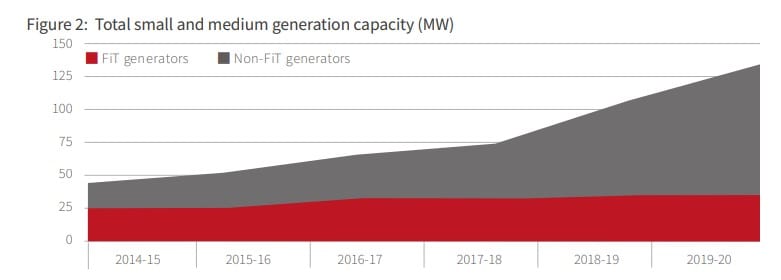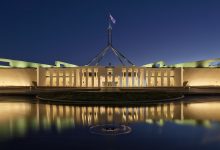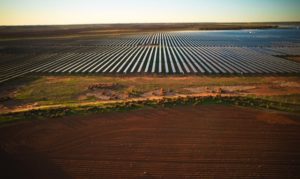The ACT government has celebrated another strong year for rooftop solar uptake, with Canberra households continuing to install their own systems at record levels – not deterred by the fact the ACT already sources 100 per cent of its power from wind and solar.
ACT energy minister Shane Rattenbury said that more than 28,000 households in the ACT had now installed their own rooftop solar systems, with installations growing by 17 per cent over the course of 2020, with more than 4,200 new systems added.
Combined, the rooftop solar systems generated almost 120,000MWh in 2020, representing around 5 per cent of the ACT’s total electricity consumption.
In its latest annual feed-in-tariff report, the ACT government said that the cost of premium feed-in-tariff schemes had fallen throughout 2020, falling 1.46 per cent, with a handful of rooftop solar installations coming off some of the higher tariffs, with an average of 83c a week added to the average consumer electricity bill.
The ACT government, in the early 2010s, introduced some of Australia’s most generous premium solar tariffs, with some households being paid 50.05 cents per kWh for all generation from their solar systems, locked in for a period of 20-years.
“Canberrans are playing a significant part in generating the ACT’s 100% renewable electricity supply. Canberrans recognise the value solar has to our clean, green and affordable energy future,” Rattenbury said.
“The FiT scheme, which was designed as an incentive to boost solar uptake when the technology was new and more expensive, has made an important contribution to renewable electricity generation in the ACT.”
“Though the scheme closed to new applicants in 2011, having served its purpose to drive investment and help bring solar system prices down, I am delighted to see so many Canberrans are taking up clean, green renewable energy options,” Rattenbury added.

Despite the feed-in-tariffs now being closed, uptake for non-tariff systems surged to new highs in 2020.
The ACT government said that the combined output from Canberra’s small-scale solar generators now totalled 135MW and uptake is expected to be strong throughout 2021, with the re-elected Labor-Greens ACT government to introduce a Sustainable Household Loan Scheme.

“Installing solar at your home or business can bring your energy costs down while contributing to our 100% renewable electricity supply, so I encourage Canberrans to look how they can contribute to Canberra’s clean energy future,” Rattenbury said.
As reported previously by RenewEconomy, 2020 proved to be a record breaking year for rooftop solar installations, with the industry overcoming a challenging year for the Australian economy, finishing the year strongly and setting new records for new system additions.










